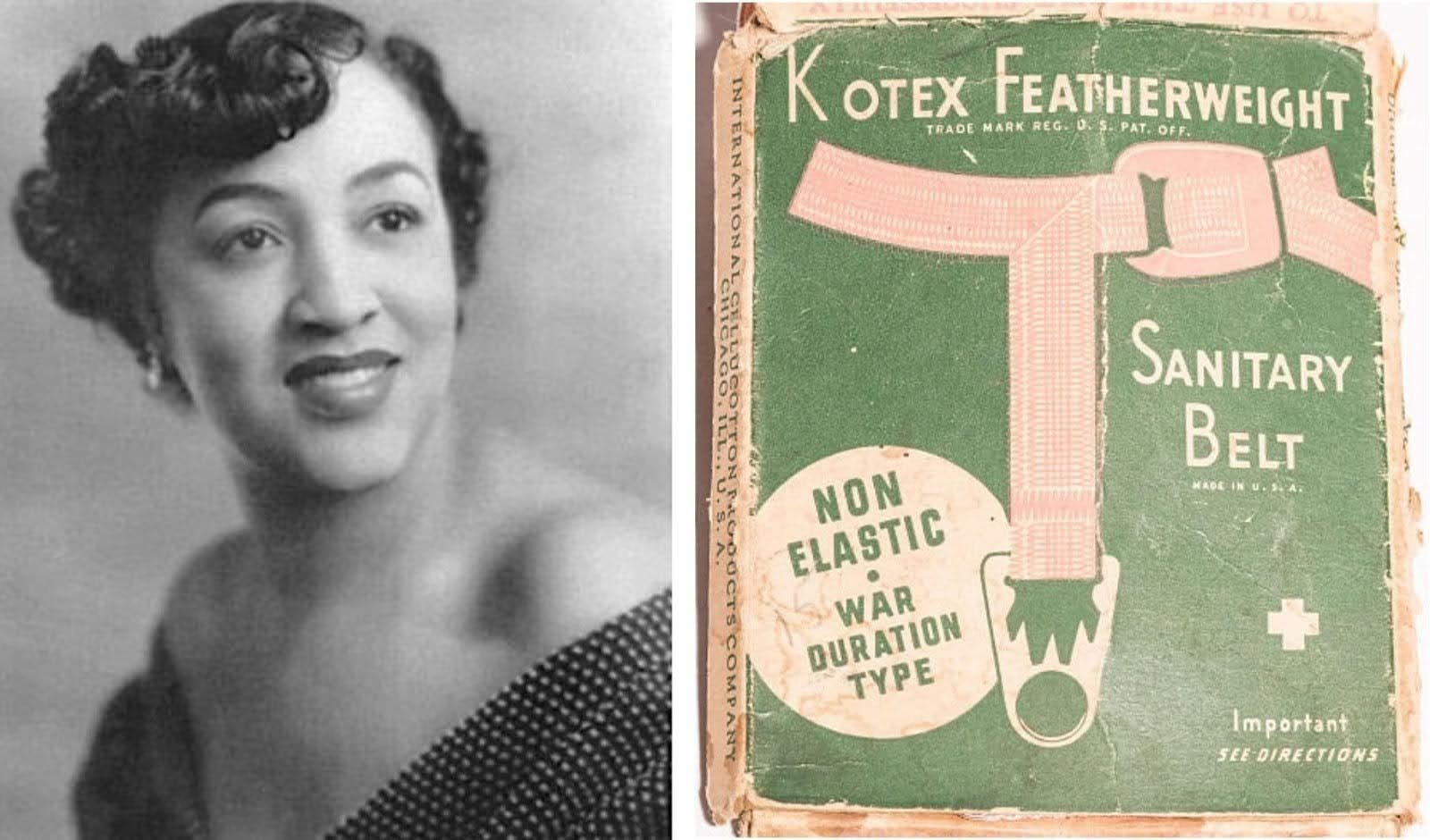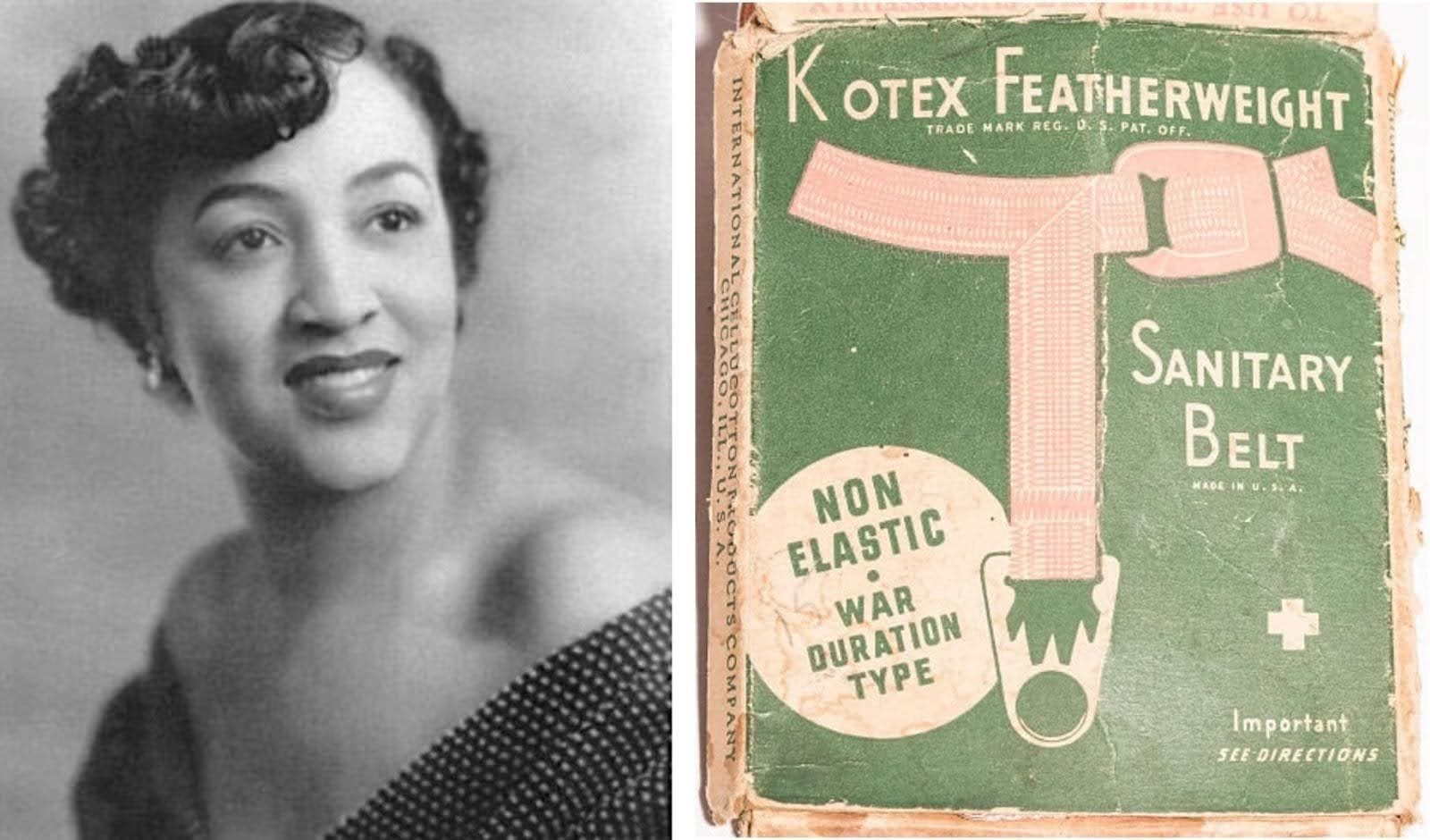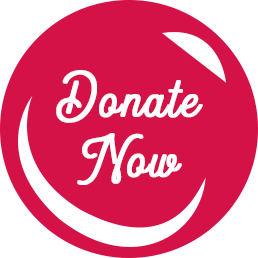Celebrating Menstrual Health Day With Our “It’s Your Period” Campaign
)
Every May, the world comes together to shed light on an issue that affects over half of the population: menstruation. Menstrual Health Day, celebrated annually on May 28th, serves as a global reminder of the significance of menstrual health and the need to eradicate the stigma surrounding it. This year, and every year, The Period Purse is on a mission to make menstrual equity a reality for all with our It's Your Period campaign.
But what exactly is menstrual equity? It's the assurance that everyone, regardless of their financial circumstances, has access to menstrual products, education, and support. Sadly, many individuals face period poverty, a situation where they cannot afford the necessary products to manage their menstruation with dignity. It's an issue that affects not only individuals' physical health but also their education, employment, and overall well-being.
The great news is there are so many ways to support our campaign! You can donate to help us reach our $20,000 goal, participate in period presentations to learn more about menstrual equity, organize Mini Drives with your community, or sign up to join the menstruation movement .
On Menstrual Health Day itself, cities across Canada are encouraged to participate in various activities, from illuminating buildings in red, to raising period flags as a symbol of solidarity. Businesses and government bodies are also urged to take concrete steps, such as signing period proclamations, to demonstrate their commitment to ending period poverty and providing free menstrual products in washrooms.
Let's come together this May and work towards a future where everyone can menstruate with dignity, informed choice, and without shame. Because, ultimately, it's not just about one day—it's about equality every day! Over half of the population menstruates, and deserve to menstruate with dignity, be informed, and have a choice - because It's Your Period .
_____
Célébration de la Journée de la santé menstruelle avec notre campagne « Ce sont vos règles »
Chaque année, au mois de mai, le monde se réunit pour mettre en lumière un problème qui touche plus de la moitié de la population : la menstruation. La Journée de la santé menstruelle, célébrée chaque année le 28 mai, est un rappel mondial de l'importance de la santé menstruelle et de la nécessité d'éradiquer la stigmatisation qui l'entoure. Cette année, et chaque année, The Period Purse s'est donné pour mission de faire de l'équité menstruelle une réalité pour tous grâce à sa campagne Ce sont vos règles.
Mais qu'est-ce que l'équité menstruelle ? C'est l'assurance que tout le monde, quelle que soit sa situation financière, a accès aux produits menstruels, à l'éducation et au soutien. Malheureusement, de nombreuses personnes sont confrontées à la précarité menstruelle, une situation où elles n'ont pas les moyens d'acheter les produits nécessaires pour gérer leur menstruation avec dignité. Ce problème affecte non seulement la santé physique des personnes, mais aussi leur éducation, leur emploi et leur bien-être général.
La bonne nouvelle, c'est qu'il y a de nombreuses façons de soutenir notre campagne ! Vous pouvez faire un don pour nous aider à atteindre notre objectif de 20 000 $, participer à des présentations sur les règles pour en apprendre davantage sur l'équité menstruelle, organiser des Mini-drives avec votre communauté ou vous inscrire pour rejoindre le mouvement menstruel.
Lors de la Journée de la santé menstruelle, les villes du Canada sont encouragées à participer à diverses activités, qu'il s'agisse d'illuminer les bâtiments en rouge ou de hisser des drapeaux de menstruation en signe de solidarité. Les entreprises et les organismes gouvernementaux sont également invités à prendre des mesures concrètes, telles que la signature de proclamations sur les règles, afin de démontrer leur engagement à mettre fin à la précarité menstruelle et à fournir gratuitement des produits menstruels dans les toilettes.
Rassemblons-nous en ce mois de mai et travaillons à un avenir où tout le monde pourra avoir ses règles dans la dignité, en toute connaissance de cause et sans honte. Car, en fin de compte, il ne s'agit pas seulement d'une journée, mais d'une égalité de tous les jours ! Plus de la moitié de la population a ses règles et mérite d'avoir ses règles dans la dignité, d'être informée et d'avoir le choix - parce que Ce sont vos règles.
| Posted in:News |
The Future of Menstrual Hygiene is Sustainable and Accessible. Period.
)
It’s no secret that mainstream period care is unsustainable. Plastic menstrual products generate more than 200,000 tons of waste per year, and can take as long as 500 years to decompose.
Pads and tampons as we know them have existed for 100 years. That means every non-biodegradable period product that’s ever been used is still on this planet, taking up space in landfills or littering our waterways and ecosystems.
Mainstream products are often made with toxic chemicals like bleach, dioxins and fragrance ingredients, which are also harmful to our bodies, the soi,l and water that absorb them when they’re thrown out.
Luckily, there are other options. Joni and Aisle, for example, are known for their comfortable and planet-friendly period care. From organic, compostable pads and tampons, to reusable products like menstrual cups and discs, period underwear, and cloth pads- sustainable period care makes a huge difference.
Holding space for conversations about accessibility is just as important as sustainable period care itself. We can’t preach its importance without acknowledging that having access to it is a privilege. Not everyone has:
Clean water to wash their reusable products
Money to invest in these products, which has a higher upfront cost
The option to buy sustainable products where they live
Access to education about what these products are, and how to use them
It’s great to educate menstruators about the benefits of sustainable period care — it’s one of our favorite education sessions at The Period Purse. That said, we should never pressure or shame anyone for how they choose to manage their periods.
Switching to sustainable period care is an impactful way to show we care about the planet. But let’s not let our drive for sustainability conflict with our commitments to accessibility and inclusivity. It's possible to have both, and essential in the fight for menstrual equity!
Wanna learn more about reusable period products, sign your workplace/ school up for period positive presentation to learn everything about reusable period products with us!| Posted in:News |
Making Strides: The Period Purse's International Women's Day Fundraiser Raises $5,500
)
This International Women’s Day, we made it our mission to raise $3,000 to help fight period poverty in our community. In a true display of solidarity and generosity, we received an outpouring of donations from people dedicated to making a tangible difference. As our campaign comes to a close, we’re happy to report that we surpassed our goal and raised $5,500!
This significant contribution to The Period Purse will be used to educate people about period equity, provide products for those most in need, and allow us to continue to fight for change at all levels of government. Through initiatives like these, we inch closer to eradicating the barriers that hinder access to period products for countless menstruators.
In addition to monetary donations, The Period Purse's ‘Clear The Cart’ initiative allowed donors to send products easily, right to our storage unit. By providing a platform for people to contribute essential items directly from our Amazon wishlist, ‘Clear The Cart’ demonstrated how small acts of kindness, when combined with community, can create a huge impact!
We’d like to extend a special thank you to volunteers from Bayer who celebrated International Women's Day by creating period packs with us at Dymon Etobicoke for delivery to our community partners as part of their commitment to reduce the stigma around menstruation.
These donations extend far beyond mere numbers; they represent hope and dignity restored to all menstruators. With each contribution, we affirm our commitment to ensuring that no one is forced to endure the indignity of period poverty.
As we reflect on our International Women's Day campaign, we are filled with gratitude for the unwavering support of our community. Period poverty is not only a “women’s issue”; it transcends gender boundaries and affects people from all backgrounds. Menstruators, regardless of gender identity, face significant barriers in accessing essential menstrual products. This is an issue that we should all care about!
With the success of this campaign motivating us, we’re excited to launch our next big initiative leading up to and on Menstrual Health Day! Follow our MH Day journey on our website and social media channels.| Posted in:News |
A Brief History of Period Products, and the Little-Known Inventor who Revolutionized Them
Have you ever wondered what menstruators did before period products were invented? There are many different historical accounts, including:
“Tampons” made of lint wrapped around wood in Ancient Greece, and papyrus leaves in Ancient Egypt
“Pads” made of moss and buffalo skin in Indigenous communities
Woven fabric or flannel used as cloth pads in 18th and 19th century Europe
It wasn’t until the 1890s that early versions of modern-day period products began hitting the market.
In 1897, Johnson & Johnson started selling America’s first commercially produced, disposable “sanitary napkins”. They were called Lister’s Towels, made of cotton and gauze, but period stigma ultimately made them a commercial failure.
The applicator tampon was invented and patented by Dr. Earle Haas in 1931. That patent was later bought by a female entrepreneur named Gertrude Tendrich, who founded Tampax in 1934. The menstrual cup also had its commercial beginnings in the 1930s, when Leona Chalmers became the first to patent and market the device in 1937. That said, it took decades for either of these products to gain popularity among menstruators due to moral taboos and health concerns.
Well into the 1940s and 50s…
Blood leakage on clothes was still common with sanitary napkins, as there was no reliable way to secure them in place.
Many menstruators were still using rags as ‘pads’ with high risks of infection, and staying home from work or school on their periods.
Innovations in the menstrual pad market were not only welcome, but needed. Enter: Mary Beatrice Davidson Kenner.

Mary Kenner was a Black female inventor who revolutionized period care. She invented the sanitary belt, an adjustable device with a built-in, moisture-proof pocket to keep sanitary napkins in place. This significantly reduced the risk of blood stains, giving menstruators the confidence to go about their days while on their periods.
Kenner patented the sanitary belt in 1957, a process which is said to have taken her about 30 years due to systemic racism, sexism, and financial constraints. After getting her patent, a company approached her with an interest in marketing her product, but changed their minds when they found out she was Black.
It wasn’t until the 1970s that tampons gained popularity and adhesive pads were invented. But until then, sanitary belts were the best option for managing a period safely, comfortably and affordably. Mary Kenner never became rich from her inventions and her legacy is largely under-recognized, yet the history of period products isn’t complete without her story.
It’s important to recognize that menstrual products were invented, distributed and popularized at a very slow pace because of period poverty and menstrual inequity. While these products existed for most of the 20th century, many menstruators were either too ashamed to buy them or could not afford them.
Even as these products became mainstream, the tendency to use blue, rather than red liquid in pad commercials and test product absorbency with water instead of blood are both indicators of persistent period stigma. Did you know that it wasn’t until 2023 that absorbency tests for period products were conducted using blood for the first time?!
We’ve come a long way, but we’ve still got further to go. One in six Canadian menstruators said they had personally experienced period poverty in a 2023 report. Plenty of stigma and misconceptions about periods persist to this day. That’s why The Period Purse’s work in outreach, education and advocacy are so important. By increasing product accessibility, promoting evidence-based period education and challenging the status quo, we can all collectively make periods a little more dignified for all menstruators — just like Mary Kenner did.
Une brève histoire des produits menstruels et de l'inventrice méconnue qui les a révolutionnés
Vous êtes-vous déjà demandé ce que faisaient les personnes ayant leurs règles avant l'invention des produits menstruels ? Les récits historiques sont nombreux et variés, tels que :
Des "tampons" faits de peluche enroulée autour de bois dans la Grèce antique, et de feuilles de papyrus dans l'Égypte ancienne
Des "serviettes sanitaires" faits de mousse et de peau de buffle dans les communautés autochtones
Du tissu tissé ou de la flanelle utilisés comme serviettes dans l'Europe des 18e et 19e siècles
Ce n'est que dans les années 1890 que les premières versions des produits menstruels modernes ont commencé à être commercialisées.
En 1897, Johnson & Johnson a commencé à vendre les premières "serviettes hygiéniques" jetables produites commercialement en Amérique. Elles étaient appelées "Lister's Towels" et composées de coton et de gaze, mais les préjugés liés aux règles en ont fait un échec commercial.
Le tampon avec applicateur a été inventé et breveté par le Dr Earle Haas en 1931. Ce brevet a ensuite été acheté par une femme entrepreneur du nom de Gertrude Tendrich, qui a fondé Tampax en 1934. La coupe menstruelle a également connu ses débuts commerciaux dans les années 1930, lorsque Leona Chalmers a été la première à breveter et à commercialiser le produit en 1937. Cela dit, il a fallu des décennies pour que l'un ou l'autre de ces produits gagne en popularité parmi les personnes ayant des menstruations, en raison de tabous moraux et d'inquiétudes pour la santé.
Dans les années 1940 et 1950...
Les taches de sang sur les vêtements étaient encore fréquentes avec les serviettes sanitaires, car il n'existait pas de moyen fiable de les maintenir en place.
De nombreuses personnes menstruées utilisaient encore des guenilles comme serviettes, avec des risques élevés d'infection, et restaient à la maison pendant leurs règles.
Les innovations sur le marché des serviettes sanitaires n'étaient pas seulement les bienvenues, elles étaient nécessaires. Entrée en scène : Mary Beatrice Davidson Kenner.

Mary Kenner est une inventrice noire qui a révolutionné le soin des règles. Elle a inventé la ceinture sanitaire, un dispositif réglable doté d'une poche intégrée résistante à l'humidité pour maintenir les serviettes sanitaires en place. Ce dispositif réduit considérablement le risque de taches de sang et permet aux personnes ayant leurs règles de vaquer à leurs occupations en toute confiance.
Kenner a breveté la ceinture hygiénique en 1957, un processus qui lui a pris environ 30 ans en raison du racisme systémique, du sexisme et des contraintes financières. Après avoir obtenu son brevet, une entreprise l'a approchée pour commercialiser son produit, mais a changé d'avis lorsqu'elle a découvert qu'elle était noire.
Ce n'est que dans les années 1970 que les tampons ont gagné en popularité et que les serviettes adhésives ont été inventées. Mais jusque-là, les ceintures sanitaires étaient la meilleure option pour gérer les règles en toute sécurité, dans le confort et à un prix abordable. Mary Kenner ne s'est jamais enrichie grâce à ses inventions et son héritage est largement méconnu, mais elle fait partie intégrante de l'histoire des produits menstruels.
Il est important de reconnaître que les produits menstruels ont été inventés, distribués et popularisés très lentement en raison de la précarité et de l'iniquité menstruelle. Bien que ces produits existaient pendant la majeure partie du 20e siècle, de nombreuses personnes menstruées avaient trop honte de les acheter ou n'avaient pas les moyens de se les procurer.
Même quand ces produits sont devenus courants, la tendance à utiliser un liquide bleu plutôt que rouge dans les publicités pour les serviettes sanitaires et à tester le pouvoir absorbant des produits avec de l'eau plutôt qu'avec du sang sont deux indicateurs de la persistance de la stigmatisation des règles. Saviez-vous que ce n'est qu'en 2023 que les tests d'absorption des produits pour les règles ont été effectués pour la première fois avec du sang ?
Nous avons parcouru un long chemin, mais ce n’est pas fini. Dans un rapport publié en 2023, une personne menstruée canadienne sur six a déclaré une expérience vécue avec la pauvreté menstruelle. De nombreux préjugés et idées fausses sur les règles persistent encore aujourd'hui. C'est pourquoi le travail de sensibilisation, d'éducation et de revendication chez The Period Purse est si important. En améliorant l'accessibilité des produits, en promouvant l’éducation basée sur les preuves et en remettant en question le statu quo, nous pouvons tous collectivement rendre les règles un peu plus dignes pour toutes les personnes menstruées - tout comme Mary Kenner l'a fait.
| Posted in:News |
Aisle Partners with Fleming College to Donate $10,000 Worth of Period Products
)
In a powerful move towards sustainability and menstrual equity, period product company Aisle has teamed up with Fleming College to donate $10,000 worth of reusable period products.
Founded in 1993, Aisle was built on the belief that “the period aisle should be stocked with radically comfortable products that actually work — for people and the planet”. Their line of products ranges from reusable pads and liners, to leak proof underwear and menstrual cups, all designed with a goal to empower people with periods to embrace sustainability.
This joint initiative has allowed Fleming College to include reusable menstrual products in all of the Emergency Food Banks across their campuses. These food banks are operated by the Fleming Student Administrative Council (SAC), which provides a helping hand to students and families facing challenges in the community. These locations will now be able to offer long term, sustainable solutions to period poverty at a local level.
How much of a difference do reusable menstrual products make??

It’s becoming increasingly well known that reusable menstrual products have a positive environmental impact, thanks to the fact that they last for years with recommended use and care.
Over 5 years of use, these reusable products are equivalent to a whopping 71,518 disposable pads/tampons. This stops roughly 717 kilograms of period products from ending up in landfills!
In donating these products, Aisle has avoided a staggering 2,516 kilograms of greenhouse gas emissions. To provide a tangible comparison, this is equivalent to the emissions saved by driving a car for almost 10,000 kilometers!
The energy conserved through Aisle’s donation amounts to an impressive 26,450 kilowatt-hours. To put this in perspective, that's the equivalent to the energy consumption of 110,166 days (over 300 YEARS) of LED bulbs!
When it comes to making the world a better place, every act of kindness, no matter the scale, is a step in the right direction, whether you're a small business like Aisle, an institution like Fleming College, or a small group of friends contributing to a local food bank. By fostering a culture of compassion and empathy, we pave the way for a future where no one has to face the challenges of period poverty alone.
If you’d like to learn more about how you can help end period poverty in your community, check out our Mini Drives.| Posted in:News |




